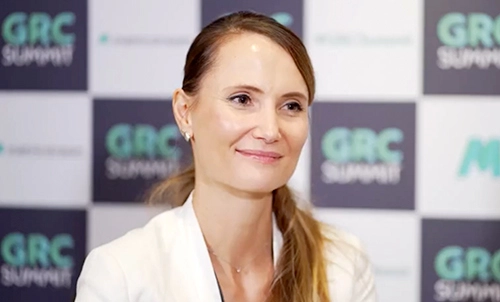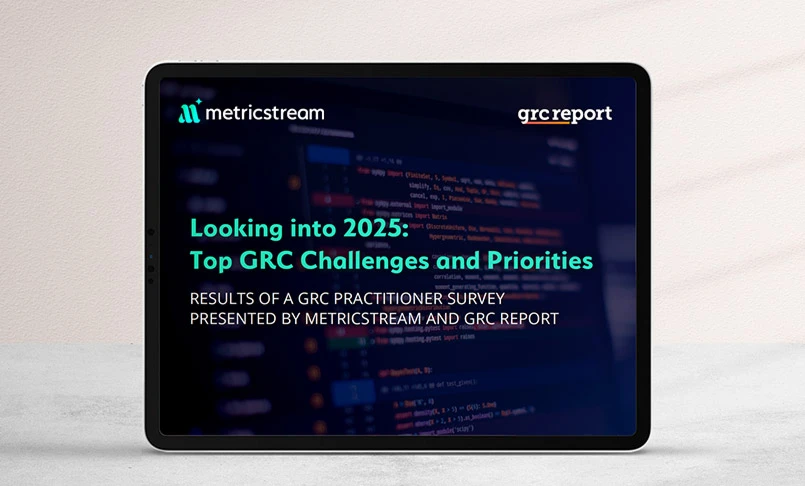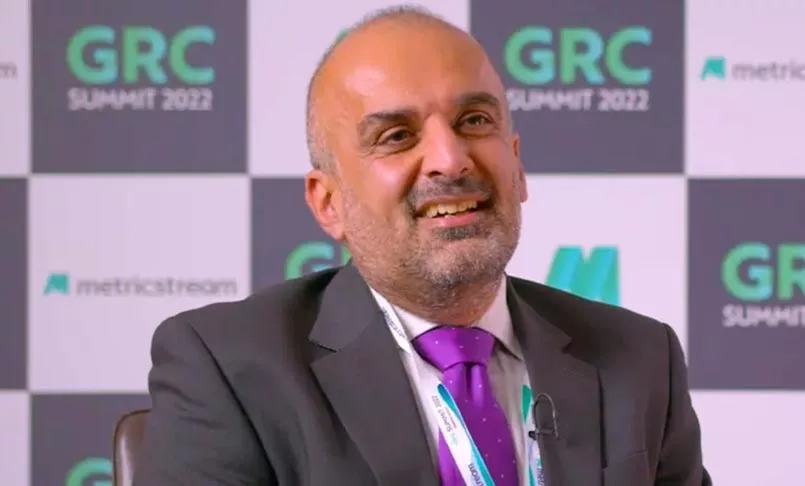Introduction
As organizations navigate an increasingly complex regulatory landscape, managing compliance requirements efficiently has become a top priority. Many industries, such as finance, healthcare, and technology must adhere to multiple compliance frameworks like GDPR, ISO 27001, SOC 2, HIPAA, and NIST. However, managing these frameworks separately can lead to duplication of efforts, increased costs, and inefficiencies.
A Common Controls Framework (CCF) helps organizations streamline compliance by consolidating multiple regulatory requirements into a unified set of controls. This approach minimizes redundancy, enhances security, and ensures continuous compliance without duplicating efforts.
Key Takeaways
- A common controls framework (CCF) simplifies compliance by integrating multiple regulatory frameworks into a single set of controls.
- It reduces redundancies, optimizes resources, and strengthens security and risk management.
- Common examples include NIST Cybersecurity Framework (CSF), ISO 27001, and Secure Controls Framework (SCF).
- Organizations should assess their industry requirements, risk appetite, and scalability before implementing a CCF.
- An effective implementation involves mapping regulations, standardizing controls, automating compliance processes, and continuous monitoring.
What is a Common Controls Framework (CCF)?
A Common Controls Framework (CCF) is a unified collection of security and privacy controls built by combining requirements from multiple industry standards and regulations. Rather than maintaining separate control sets for frameworks such as PCI DSS, ISO 27001, or NIST, a CCF enables organizations to align and map similar controls across them. This streamlined approach minimizes duplication, improves compliance efficiency, reduces audit fatigue, and allows for better use of time and resources.
How Does a CCF Work?
A common controls framework functions by:
- Identifying overlapping requirements across multiple frameworks.
- Mapping regulations to a centralized set of security and compliance controls.
- Standardizing policies and procedures to meet multiple requirements.
- Automating control monitoring to maintain compliance continuously.
By adopting a CCF, businesses save time, reduce compliance costs, and improve security governance.
Benefits of Common Controls Framework (CCF)
A common controls framework (CCF) is more than just a compliance tool; it is a strategic asset that enhances efficiency, security, and scalability. Below are some key benefits of implementing a CCF:
- Reduces Compliance Complexity and Costs Managing multiple compliance frameworks separately is resource-intensive and costly.A CCF consolidates overlapping controls, reducing the burden of maintaining multiple audits, assessments, and reports. By aligning compliance efforts, businesses can allocate resources more effectively, decreasing administrative overhead and saving valuable time and money. Platforms like MetricStream make this even easier by centralizing control mapping and reducing manual effort across audits.
- Enhances Security Posture A CCF ensures that security measures are uniform and comprehensive across all regulatory requirements, reducing vulnerabilities and strengthening overall security. It helps organizations maintain consistent security policies, minimizing the risks associated with fragmented security controls. With a standardized approach, businesses can swiftly respond to emerging threats and regulatory updates.
- Improves Operational Efficiency Organizations spend less time on redundant compliance tasks and more time on strategic initiatives by streamlining controls and processes. With a well-structured CCF, compliance teams can focus on enhancing risk management strategies instead of duplicating efforts across multiple frameworks. This leads to increased productivity and better alignment of compliance functions with business goals.
- Facilitates Scalability and Growth A well-implemented CCF allows businesses to scale operations across regions and industries without reworking compliance structures. As organizations expand, a CCF ensures that compliance remains manageable, making it easier to onboard new regulations, enter new markets, and maintain consistent security standards across global operations.
- Ensures Continuous Compliance Instead of performing isolated audits for different regulations, a CCF enables ongoing compliance monitoring, ensuring organizations remain audit-ready. Through automated tracking and real-time monitoring, companies can proactively address compliance issues, reducing the risk of non-compliance and regulatory penalties.
Examples of a Common Controls Framework
Several established common controls frameworks provide best practices for organizations. Below are some widely adopted frameworks:
- NIST Cybersecurity Framework (CSF) Developed by the National Institute of Standards and Technology (NIST), the CSF provides a risk-based approach to cybersecurity, helping organizations manage security threats effectively. It includes five key functions—identify, protect, detect, respond, and recover—providing a systematic approach to enhance cybersecurity practices.
- ISO/IEC 27001 This globally recognized information security management system (ISMS) standard outlines best practices for risk management, security policies, and compliance controls. ISO 27001 provides a step-by-step approach to handling sensitive company data, while ensuring privacy, integrity, and ease of access and reducing security risks.
- Secure Controls Framework (SCF) The SCF is a comprehensive security framework that integrates controls from over 100 security and privacy regulations, making it a robust option for organizations handling sensitive data. It provides an extensive library of security and privacy controls, allowing organizations to streamline compliance with multiple regulatory frameworks in one place.
- COBIT (Control Objectives for Information and Related Technologies) COBIT is an IT governance framework that helps organizations align IT operations with business objectives while maintaining compliance. It provides guidelines for managing and governing IT processes, ensuring that technology investments align with overall corporate strategy and compliance requirements.
- HITRUST CSF The Health Information Trust Alliance (HITRUST) CSF is widely used in the healthcare industry to manage HIPAA, GDPR, and other security requirements. It incorporates various security, privacy, and regulatory frameworks into a single control structure, offering a scalable approach to healthcare data protection and risk management.
Many organizations use MetricStream alongside these frameworks to centralize control libraries and create a single source of truth for all compliance requirements.
Key Factors to Consider Before Setting a CCF
Implementing a common controls framework requires careful planning and consideration of multiple factors. Here are some essential aspects to evaluate before setting up a CCF:
- Industry-Specific Compliance Requirements Every industry operates under specific regulatory and compliance standards that must be adhered to. For example, healthcare organizations must comply with HIPAA (for patient data protection), HITRUST (a security framework tailored for healthcare), and GDPR (for handling personal data in the EU). In finance, standards like PCI-DSS (for payment security), SOX (for financial reporting), and Basel II (for risk management) are critical. Understanding these industry-specific requirements ensures the CCF is built with the right regulatory focus.
- Risk Appetite and Business Objectives A well-designed CCF should align with the organization’s overall risk management strategy and business goals. Businesses with a high-risk appetite may focus on innovation while maintaining baseline compliance, whereas those in highly regulated sectors like healthcare and finance must prioritize risk minimization. Additionally, the framework should support long-term growth by ensuring that security and compliance measures do not hinder business agility.
- Resources and Budget Implementing a CCF involves financial and human resource investments. Organizations must allocate funds for compliance software, security monitoring tools, and expert personnel such as compliance officers and IT security specialists. Automation tools can streamline processes, but they require upfront investment. A well-planned budget ensures that compliance efforts are cost-effective while meeting regulatory requirements.
- Scalability and Future-Proofing As businesses grow, compliance requirements often become more complex. A CCF should be designed with flexibility to accommodate new regulations, acquisitions, or operational expansions. Future-proofing the framework by adopting adaptable security controls and scalable compliance solutions ensures that businesses can respond to evolving threats and regulatory changes without major overhauls.
- Integration with Existing Systems A CCF should seamlessly integrate with an organization’s current IT infrastructure, including security monitoring tools, Governance, Risk, and Compliance (GRC) platforms, and identity management systems. Ensuring interoperability between compliance controls and existing security systems enhances visibility, reduces redundancy, and improves overall efficiency.
Solutions like MetricStream can accelerate these steps by automating control mapping, simplifying audits, and enabling continuous compliance tracking from a single platform.
How to Implement a Common Controls Framework Effectively?
A successful CCF implementation requires strategic planning and execution. The following step-by-step approach helps streamline compliance while minimizing risks:
Step 1: Identify Relevant Compliance Frameworks
Start by determining which regulatory frameworks and standards apply to your business. This involves assessing mandatory legal requirements, industry best practices, and internal policies. Understanding overlapping requirements across frameworks such as GDPR, ISO 27001, NIST, and SOC 2 helps establish a unified compliance approach.
Step 2: Map Common Controls
Since different compliance frameworks often have overlapping controls, businesses should identify shared elements across them. By mapping these controls into a single framework, organizations can avoid duplication, reduce compliance workload, and improve efficiency. This process creates a standardized set of security and risk management controls applicable across multiple regulatory requirements.
Step 3: Develop Policies and Procedures
Establish well-defined policies and procedures that align with the mapped controls. These should cover critical areas such as data security, risk management, access control, incident response, and user behavior guidelines. Clear documentation ensures consistency, makes audits easier, and provides employees with guidelines to follow.
Step 4: Implement Automation Tools Leverage compliance automation tools to track, manage, and enforce security controls effectively. Automated solutions help monitor real-time compliance status, generate reports for audits, and ensure continuous adherence to regulatory requirements. Automation also reduces human error and improves response times in case of security incidents.
Step 5: Train Employees and Stakeholders
Employees play a crucial role in maintaining compliance, so regular training programs are essential. These sessions should educate staff about security best practices, data protection policies, and their compliance responsibilities. Engaging leadership and key stakeholders ensures a top-down commitment to compliance, fostering a culture of security and accountability.
Step 6: Continuous Monitoring and Auditing
Compliance is an ongoing process, not a one-time task. Organizations need to implement continuous monitoring systems to evaluate compliance, identify vulnerabilities, and keep up with regulatory changes. .Regular internal audits and security assessments help identify gaps, allowing for timely improvements and risk mitigation.
Step 7: Conduct Independent Assessments
Periodic third-party audits provide an unbiased evaluation of the organization's compliance posture. External assessments help validate the effectiveness of security controls, uncover potential weaknesses, and ensure compliance with industry standards. These audits also demonstrate due diligence to regulators, customers, and business partners.
By following these steps, organizations can streamline compliance, reduce risks, and enhance their overall security posture. A well-implemented CCF not only simplifies regulatory adherence but also strengthens trust with stakeholders by demonstrating a commitment to security and governance.
Why MetricStream?
A CCF is a game-changer for organizations managing multiple compliance requirements. By consolidating security controls, businesses can reduce compliance costs, enhance security, and improve operational efficiency.
Whether your organization is in healthcare, finance, or technology, adopting a CCF ensures a structured, scalable, and proactive approach to governance, risk, and compliance. With the right strategy, tools, and continuous monitoring, a CCF can become a foundation for long-term regulatory success.
With MetricStream’s CyberGRC product suite including IT and Cyber Risk Management and IT and Cyber Compliance Management software, organizations can ensure that their risk, compliance, audit, cybersecurity, and sustainability teams are all operating with the same set of frameworks, ensuring that there are no gaps in compliance. For more information, request a personalized demo.
Frequently Asked Questions
What are the common internal control frameworks?
Common internal control frameworks include COSO (Committee of Sponsoring Organizations), NIST Cybersecurity Framework, ISO 27001, COBIT, and HITRUST CSF. These frameworks help organizations manage risk, security, and compliance.
What is a secure controls framework?
A Secure Controls Framework (SCF) is a comprehensive set of security and compliance controls designed to help organizations achieve cybersecurity, privacy, and regulatory compliance by integrating best practices from multiple security standards.
What is the difference between UCF and SCF?
The Unified Compliance Framework (UCF) is a commercial database of mapped compliance controls, while the Secure Controls Framework (SCF) is an open-source set of security and privacy controls designed for broad, cross-industry use.
What is an example of a common control framework?
An example of a common control framework is the Secure Controls Framework (SCF), which consolidates controls from multiple regulations and standards into one unified structure.
What is the most commonly used control framework?
ISO/IEC 27001 is one of the most widely adopted control frameworks worldwide for managing information security risks.
What is the primary purpose of the common control framework?
The primary purpose of a common control framework is to map and unify overlapping compliance requirements, reducing redundancy and streamlining regulatory adherence.
As organizations navigate an increasingly complex regulatory landscape, managing compliance requirements efficiently has become a top priority. Many industries, such as finance, healthcare, and technology must adhere to multiple compliance frameworks like GDPR, ISO 27001, SOC 2, HIPAA, and NIST. However, managing these frameworks separately can lead to duplication of efforts, increased costs, and inefficiencies.
A Common Controls Framework (CCF) helps organizations streamline compliance by consolidating multiple regulatory requirements into a unified set of controls. This approach minimizes redundancy, enhances security, and ensures continuous compliance without duplicating efforts.
- A common controls framework (CCF) simplifies compliance by integrating multiple regulatory frameworks into a single set of controls.
- It reduces redundancies, optimizes resources, and strengthens security and risk management.
- Common examples include NIST Cybersecurity Framework (CSF), ISO 27001, and Secure Controls Framework (SCF).
- Organizations should assess their industry requirements, risk appetite, and scalability before implementing a CCF.
- An effective implementation involves mapping regulations, standardizing controls, automating compliance processes, and continuous monitoring.
A Common Controls Framework (CCF) is a unified collection of security and privacy controls built by combining requirements from multiple industry standards and regulations. Rather than maintaining separate control sets for frameworks such as PCI DSS, ISO 27001, or NIST, a CCF enables organizations to align and map similar controls across them. This streamlined approach minimizes duplication, improves compliance efficiency, reduces audit fatigue, and allows for better use of time and resources.
A common controls framework functions by:
- Identifying overlapping requirements across multiple frameworks.
- Mapping regulations to a centralized set of security and compliance controls.
- Standardizing policies and procedures to meet multiple requirements.
- Automating control monitoring to maintain compliance continuously.
By adopting a CCF, businesses save time, reduce compliance costs, and improve security governance.
A common controls framework (CCF) is more than just a compliance tool; it is a strategic asset that enhances efficiency, security, and scalability. Below are some key benefits of implementing a CCF:
- Reduces Compliance Complexity and Costs Managing multiple compliance frameworks separately is resource-intensive and costly.A CCF consolidates overlapping controls, reducing the burden of maintaining multiple audits, assessments, and reports. By aligning compliance efforts, businesses can allocate resources more effectively, decreasing administrative overhead and saving valuable time and money. Platforms like MetricStream make this even easier by centralizing control mapping and reducing manual effort across audits.
- Enhances Security Posture A CCF ensures that security measures are uniform and comprehensive across all regulatory requirements, reducing vulnerabilities and strengthening overall security. It helps organizations maintain consistent security policies, minimizing the risks associated with fragmented security controls. With a standardized approach, businesses can swiftly respond to emerging threats and regulatory updates.
- Improves Operational Efficiency Organizations spend less time on redundant compliance tasks and more time on strategic initiatives by streamlining controls and processes. With a well-structured CCF, compliance teams can focus on enhancing risk management strategies instead of duplicating efforts across multiple frameworks. This leads to increased productivity and better alignment of compliance functions with business goals.
- Facilitates Scalability and Growth A well-implemented CCF allows businesses to scale operations across regions and industries without reworking compliance structures. As organizations expand, a CCF ensures that compliance remains manageable, making it easier to onboard new regulations, enter new markets, and maintain consistent security standards across global operations.
- Ensures Continuous Compliance Instead of performing isolated audits for different regulations, a CCF enables ongoing compliance monitoring, ensuring organizations remain audit-ready. Through automated tracking and real-time monitoring, companies can proactively address compliance issues, reducing the risk of non-compliance and regulatory penalties.
Several established common controls frameworks provide best practices for organizations. Below are some widely adopted frameworks:
- NIST Cybersecurity Framework (CSF) Developed by the National Institute of Standards and Technology (NIST), the CSF provides a risk-based approach to cybersecurity, helping organizations manage security threats effectively. It includes five key functions—identify, protect, detect, respond, and recover—providing a systematic approach to enhance cybersecurity practices.
- ISO/IEC 27001 This globally recognized information security management system (ISMS) standard outlines best practices for risk management, security policies, and compliance controls. ISO 27001 provides a step-by-step approach to handling sensitive company data, while ensuring privacy, integrity, and ease of access and reducing security risks.
- Secure Controls Framework (SCF) The SCF is a comprehensive security framework that integrates controls from over 100 security and privacy regulations, making it a robust option for organizations handling sensitive data. It provides an extensive library of security and privacy controls, allowing organizations to streamline compliance with multiple regulatory frameworks in one place.
- COBIT (Control Objectives for Information and Related Technologies) COBIT is an IT governance framework that helps organizations align IT operations with business objectives while maintaining compliance. It provides guidelines for managing and governing IT processes, ensuring that technology investments align with overall corporate strategy and compliance requirements.
- HITRUST CSF The Health Information Trust Alliance (HITRUST) CSF is widely used in the healthcare industry to manage HIPAA, GDPR, and other security requirements. It incorporates various security, privacy, and regulatory frameworks into a single control structure, offering a scalable approach to healthcare data protection and risk management.
Many organizations use MetricStream alongside these frameworks to centralize control libraries and create a single source of truth for all compliance requirements.
Implementing a common controls framework requires careful planning and consideration of multiple factors. Here are some essential aspects to evaluate before setting up a CCF:
- Industry-Specific Compliance Requirements Every industry operates under specific regulatory and compliance standards that must be adhered to. For example, healthcare organizations must comply with HIPAA (for patient data protection), HITRUST (a security framework tailored for healthcare), and GDPR (for handling personal data in the EU). In finance, standards like PCI-DSS (for payment security), SOX (for financial reporting), and Basel II (for risk management) are critical. Understanding these industry-specific requirements ensures the CCF is built with the right regulatory focus.
- Risk Appetite and Business Objectives A well-designed CCF should align with the organization’s overall risk management strategy and business goals. Businesses with a high-risk appetite may focus on innovation while maintaining baseline compliance, whereas those in highly regulated sectors like healthcare and finance must prioritize risk minimization. Additionally, the framework should support long-term growth by ensuring that security and compliance measures do not hinder business agility.
- Resources and Budget Implementing a CCF involves financial and human resource investments. Organizations must allocate funds for compliance software, security monitoring tools, and expert personnel such as compliance officers and IT security specialists. Automation tools can streamline processes, but they require upfront investment. A well-planned budget ensures that compliance efforts are cost-effective while meeting regulatory requirements.
- Scalability and Future-Proofing As businesses grow, compliance requirements often become more complex. A CCF should be designed with flexibility to accommodate new regulations, acquisitions, or operational expansions. Future-proofing the framework by adopting adaptable security controls and scalable compliance solutions ensures that businesses can respond to evolving threats and regulatory changes without major overhauls.
- Integration with Existing Systems A CCF should seamlessly integrate with an organization’s current IT infrastructure, including security monitoring tools, Governance, Risk, and Compliance (GRC) platforms, and identity management systems. Ensuring interoperability between compliance controls and existing security systems enhances visibility, reduces redundancy, and improves overall efficiency.
Solutions like MetricStream can accelerate these steps by automating control mapping, simplifying audits, and enabling continuous compliance tracking from a single platform.
A successful CCF implementation requires strategic planning and execution. The following step-by-step approach helps streamline compliance while minimizing risks:
Step 1: Identify Relevant Compliance Frameworks
Start by determining which regulatory frameworks and standards apply to your business. This involves assessing mandatory legal requirements, industry best practices, and internal policies. Understanding overlapping requirements across frameworks such as GDPR, ISO 27001, NIST, and SOC 2 helps establish a unified compliance approach.
Step 2: Map Common Controls
Since different compliance frameworks often have overlapping controls, businesses should identify shared elements across them. By mapping these controls into a single framework, organizations can avoid duplication, reduce compliance workload, and improve efficiency. This process creates a standardized set of security and risk management controls applicable across multiple regulatory requirements.
Step 3: Develop Policies and Procedures
Establish well-defined policies and procedures that align with the mapped controls. These should cover critical areas such as data security, risk management, access control, incident response, and user behavior guidelines. Clear documentation ensures consistency, makes audits easier, and provides employees with guidelines to follow.
Step 4: Implement Automation Tools Leverage compliance automation tools to track, manage, and enforce security controls effectively. Automated solutions help monitor real-time compliance status, generate reports for audits, and ensure continuous adherence to regulatory requirements. Automation also reduces human error and improves response times in case of security incidents.
Step 5: Train Employees and Stakeholders
Employees play a crucial role in maintaining compliance, so regular training programs are essential. These sessions should educate staff about security best practices, data protection policies, and their compliance responsibilities. Engaging leadership and key stakeholders ensures a top-down commitment to compliance, fostering a culture of security and accountability.
Step 6: Continuous Monitoring and Auditing
Compliance is an ongoing process, not a one-time task. Organizations need to implement continuous monitoring systems to evaluate compliance, identify vulnerabilities, and keep up with regulatory changes. .Regular internal audits and security assessments help identify gaps, allowing for timely improvements and risk mitigation.
Step 7: Conduct Independent Assessments
Periodic third-party audits provide an unbiased evaluation of the organization's compliance posture. External assessments help validate the effectiveness of security controls, uncover potential weaknesses, and ensure compliance with industry standards. These audits also demonstrate due diligence to regulators, customers, and business partners.
By following these steps, organizations can streamline compliance, reduce risks, and enhance their overall security posture. A well-implemented CCF not only simplifies regulatory adherence but also strengthens trust with stakeholders by demonstrating a commitment to security and governance.
A CCF is a game-changer for organizations managing multiple compliance requirements. By consolidating security controls, businesses can reduce compliance costs, enhance security, and improve operational efficiency.
Whether your organization is in healthcare, finance, or technology, adopting a CCF ensures a structured, scalable, and proactive approach to governance, risk, and compliance. With the right strategy, tools, and continuous monitoring, a CCF can become a foundation for long-term regulatory success.
With MetricStream’s CyberGRC product suite including IT and Cyber Risk Management and IT and Cyber Compliance Management software, organizations can ensure that their risk, compliance, audit, cybersecurity, and sustainability teams are all operating with the same set of frameworks, ensuring that there are no gaps in compliance. For more information, request a personalized demo.
What are the common internal control frameworks?
Common internal control frameworks include COSO (Committee of Sponsoring Organizations), NIST Cybersecurity Framework, ISO 27001, COBIT, and HITRUST CSF. These frameworks help organizations manage risk, security, and compliance.
What is a secure controls framework?
A Secure Controls Framework (SCF) is a comprehensive set of security and compliance controls designed to help organizations achieve cybersecurity, privacy, and regulatory compliance by integrating best practices from multiple security standards.
What is the difference between UCF and SCF?
The Unified Compliance Framework (UCF) is a commercial database of mapped compliance controls, while the Secure Controls Framework (SCF) is an open-source set of security and privacy controls designed for broad, cross-industry use.
What is an example of a common control framework?
An example of a common control framework is the Secure Controls Framework (SCF), which consolidates controls from multiple regulations and standards into one unified structure.
What is the most commonly used control framework?
ISO/IEC 27001 is one of the most widely adopted control frameworks worldwide for managing information security risks.
What is the primary purpose of the common control framework?
The primary purpose of a common control framework is to map and unify overlapping compliance requirements, reducing redundancy and streamlining regulatory adherence.








